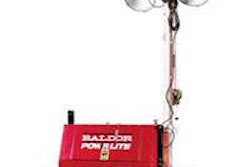In 2008 more than 37,000 people were killed and nearly 2.35 million were injured in crashes on the Nation’s roadways, according to the recently released study, A Primer on Safety Performance Measures for the Transportation Planning Process, from the Federal Highway Administration in tandem with the Transportation Safety Planning Working Group (TSPWG).
The TSPWG–an informal, ad hoc partnership of select U.S. Department of Transportation agencies and associations representing safety, traffic engineering, and planning professionals as well as state departments of transportation–report is designed to help state and local practitioners, transportation planners, and decision makers identify, select, and use safety performance measures as a part of the transportation planning process.
The study notes that the consequences of traffic crashes are felt not only by those directly involved but also by family members, friends, and coworkers who must deal with a devastating loss or find resources to cope with disabling injuries.
“The costs to society such as lost productivity, property damage, medical costs, emergency services, and travel delays are also tremendous,” according to the study.
That’s why improving safety is one of the primary goals of transportation officials, according to the report.
“The most critical safety benefit is a decrease in the number of fatal and injury crashes that occur each year on streets and highways across the nation,” the report points out. “Motor vehicle crashes are the sixth leading cause of death and the leading cause of injuries in the United States. Beyond the pain and suffering of victims and their friends and relatives, these crashes are a significant economic burden to the nation.”
In 2004, the American Association of State Highway Officials (AASHTO) estimated traffic crashes in the United States accounted for more than $230 billion in economic losses every year. Improving safety not only saves lives, but also produces other societal, environmental, and monetary benefits, such as greater mobility, increased economic development, and improved quality of life, according to the report.











